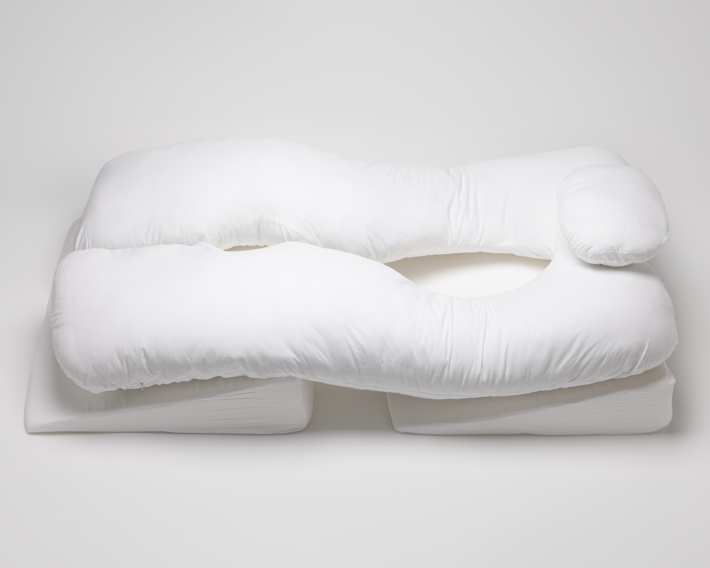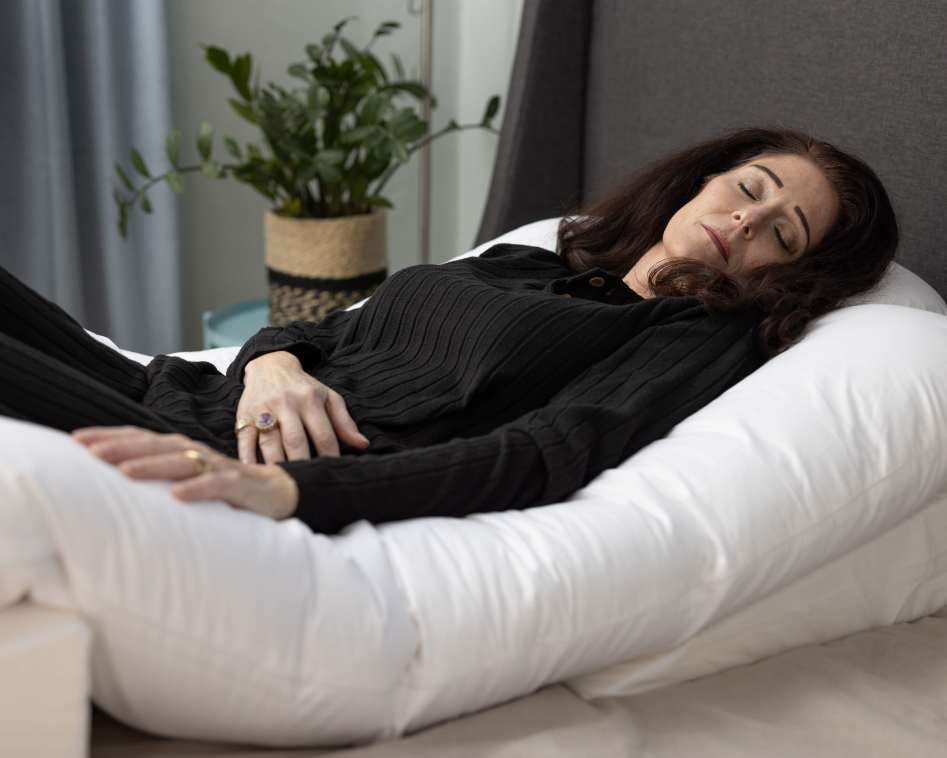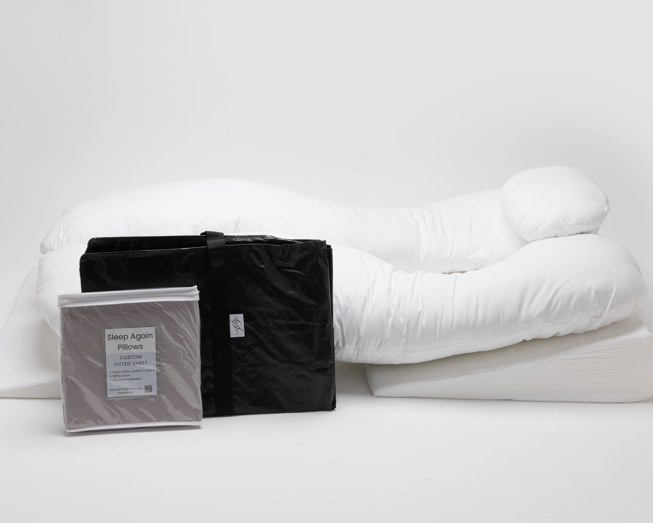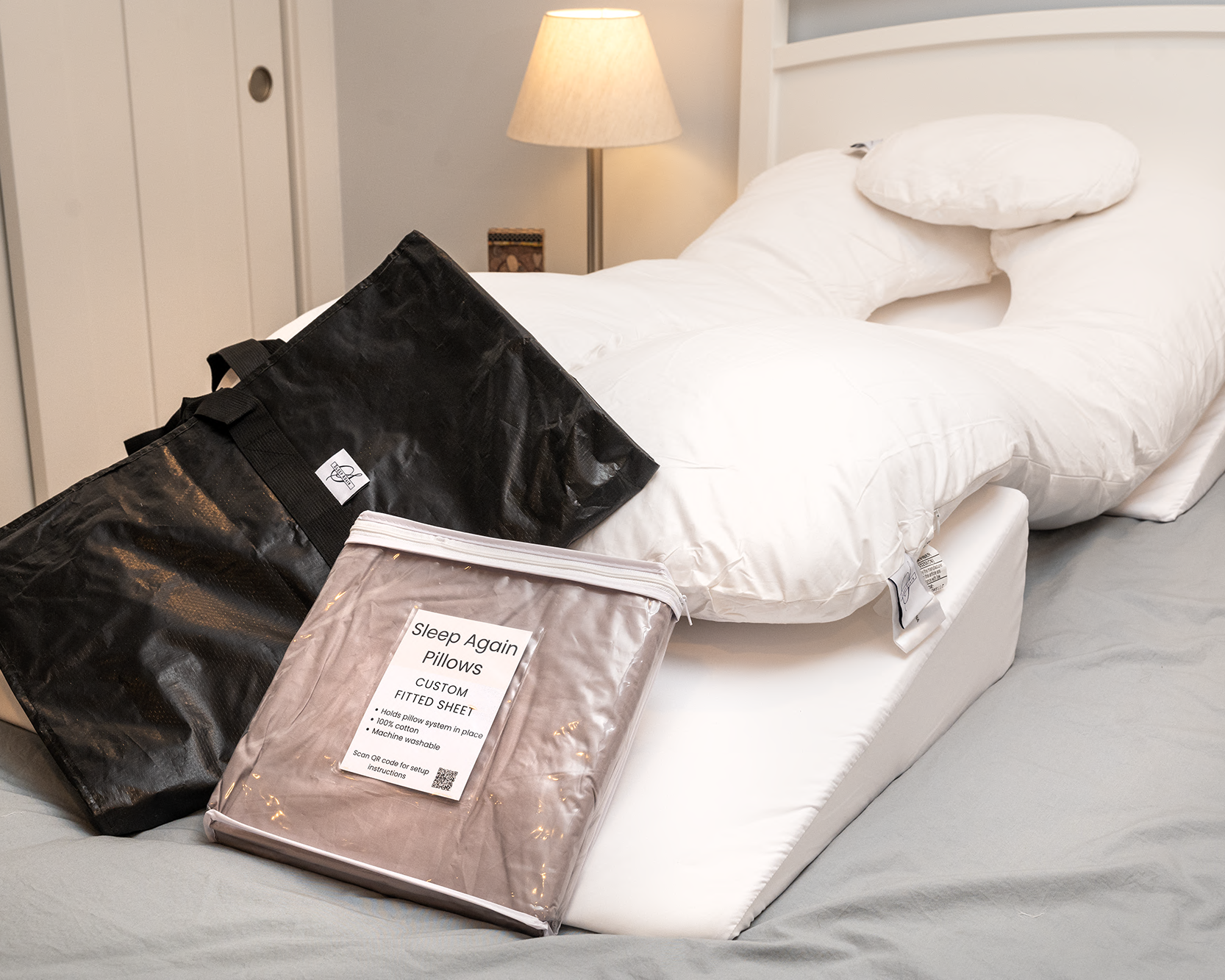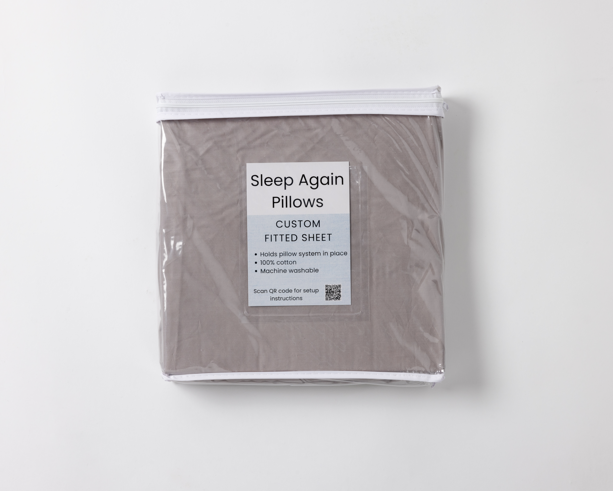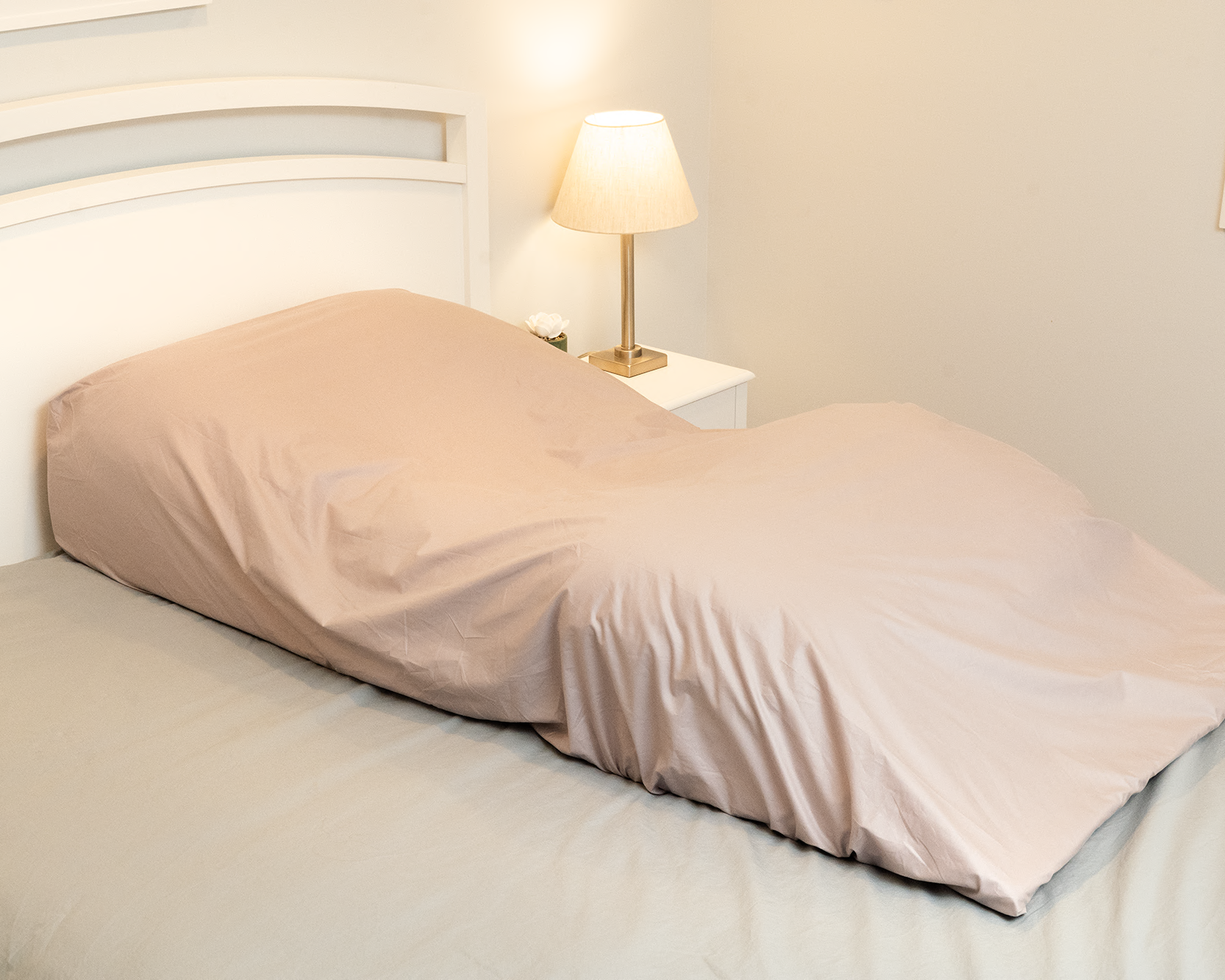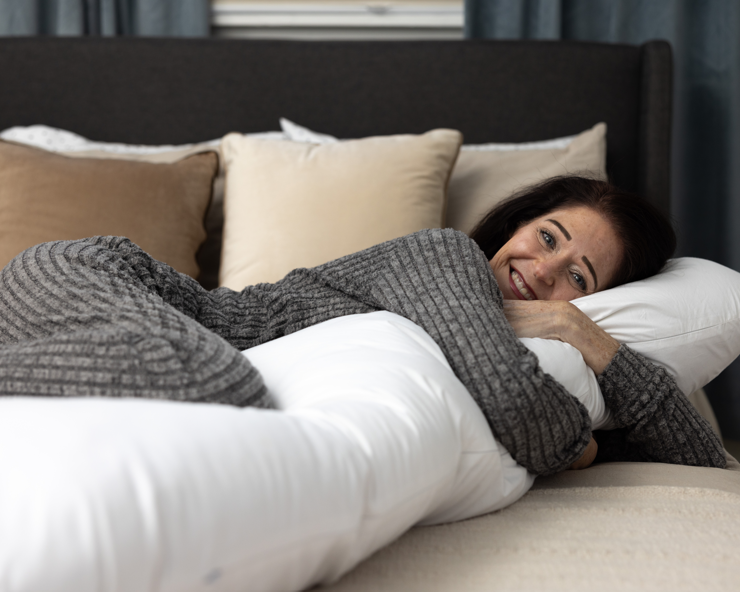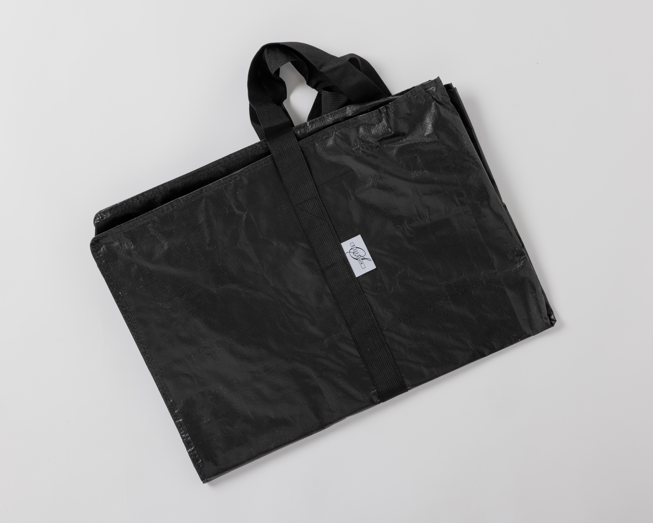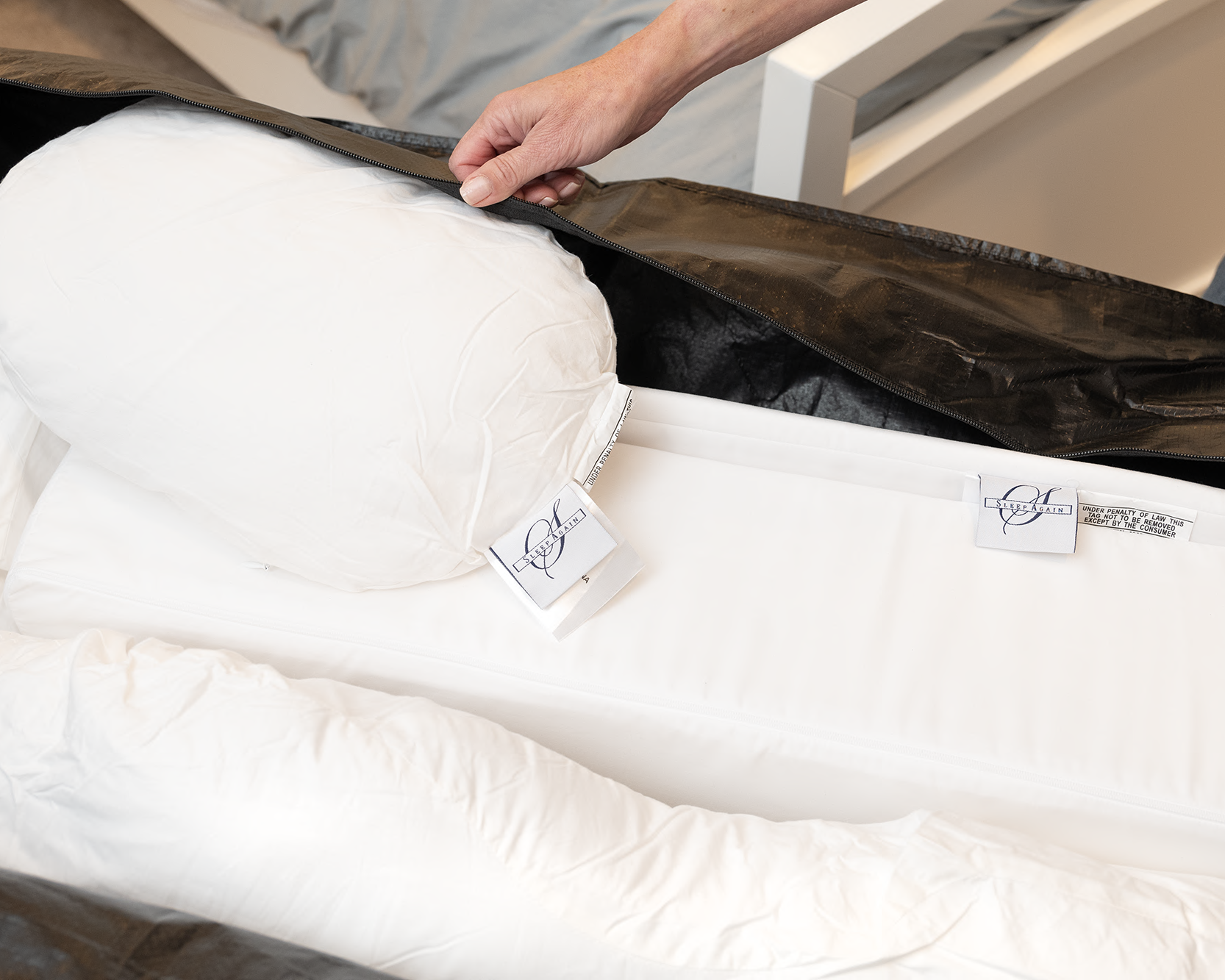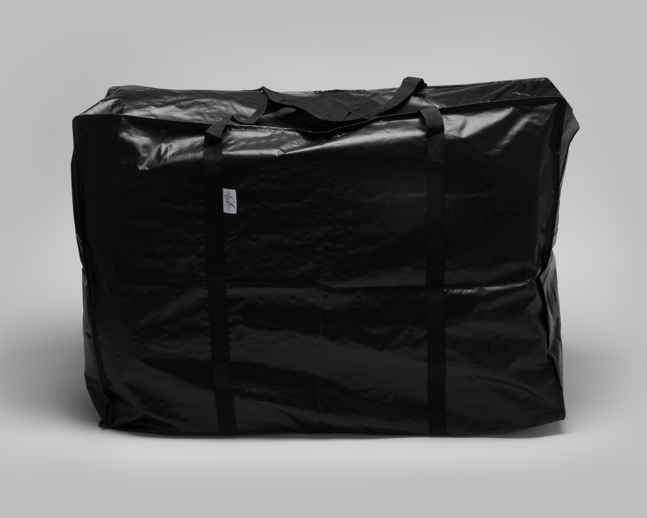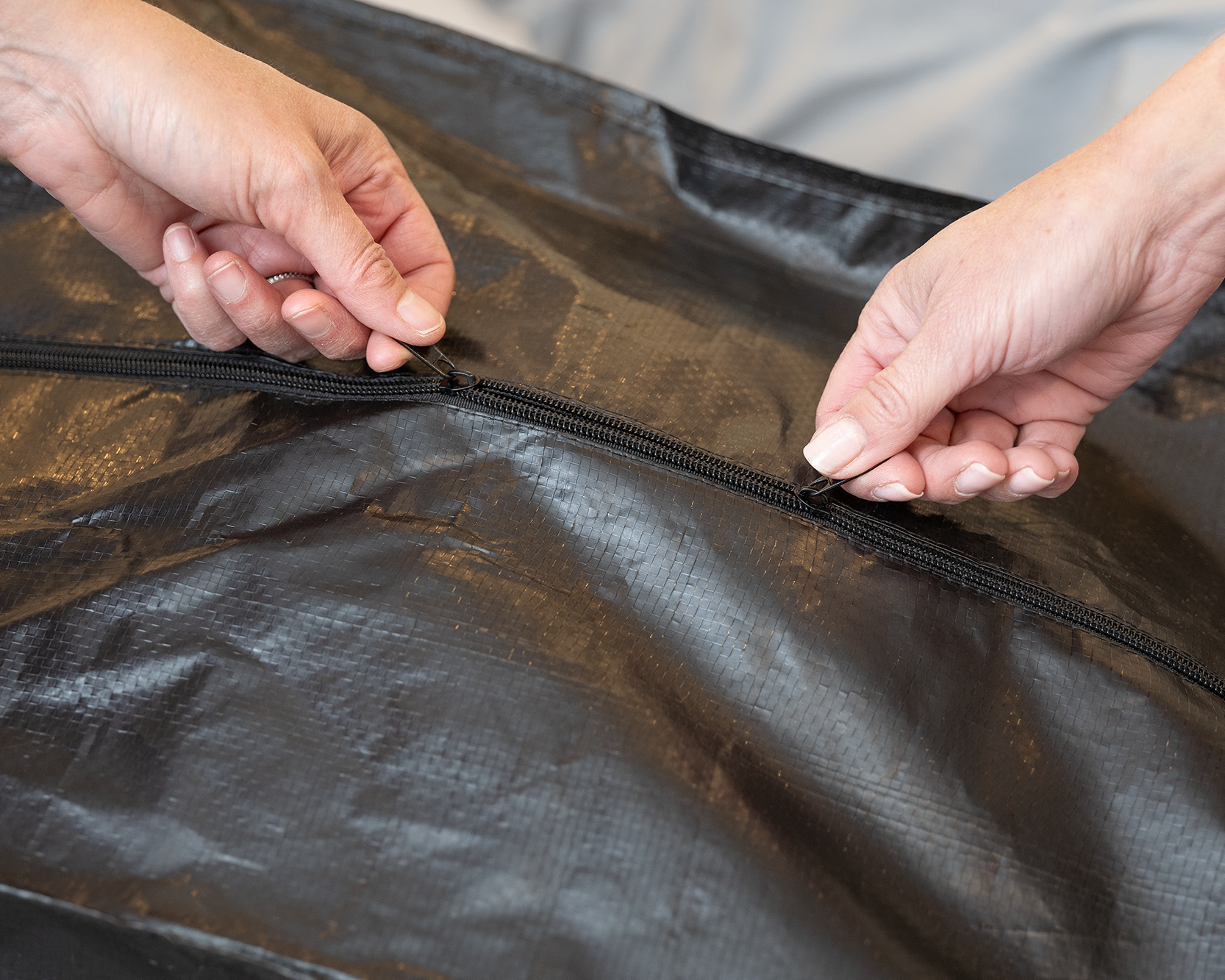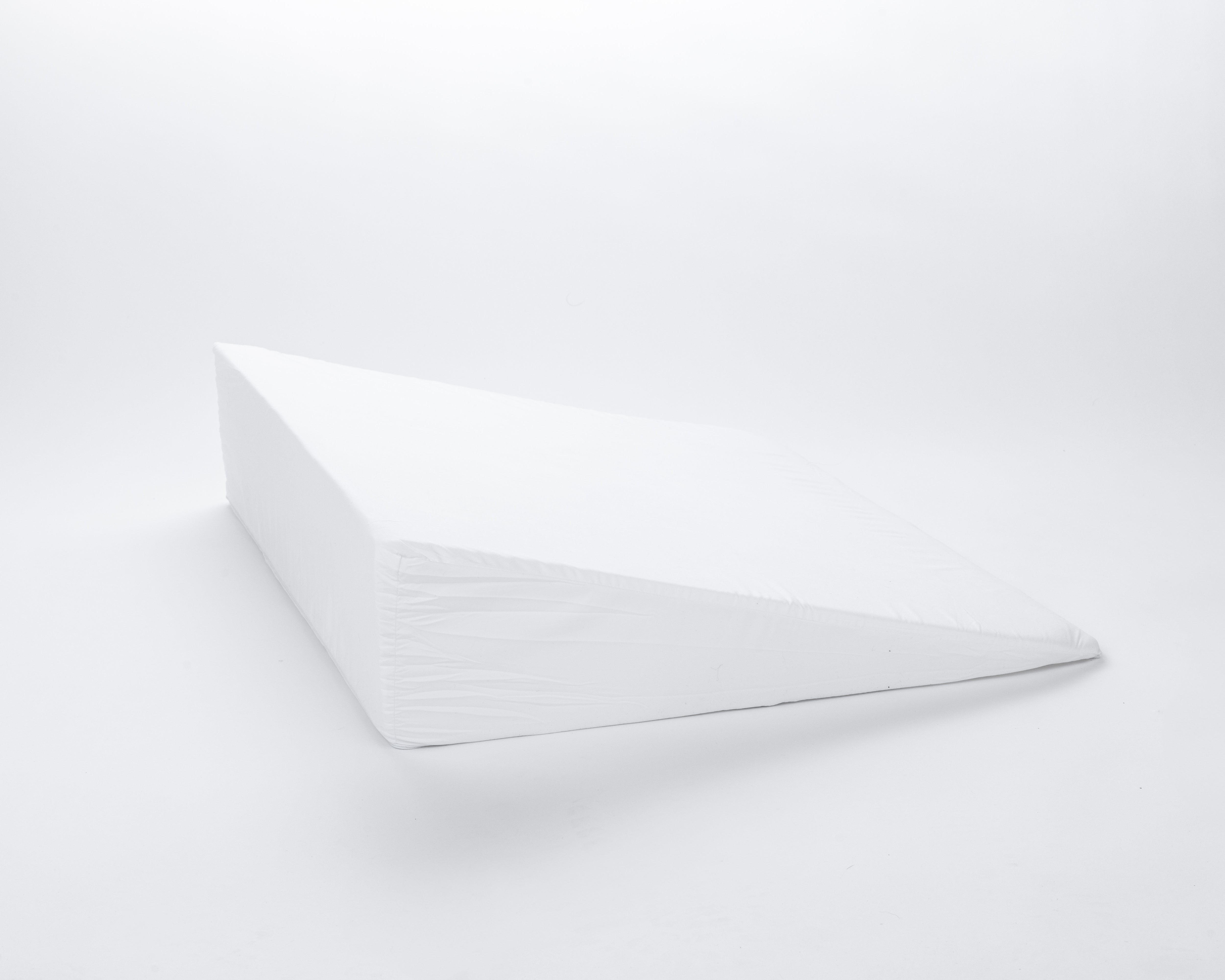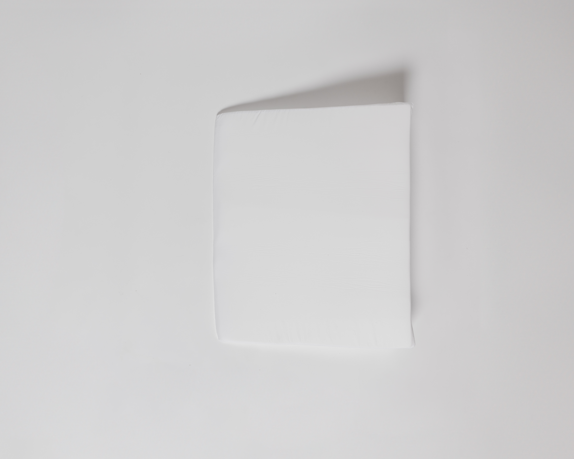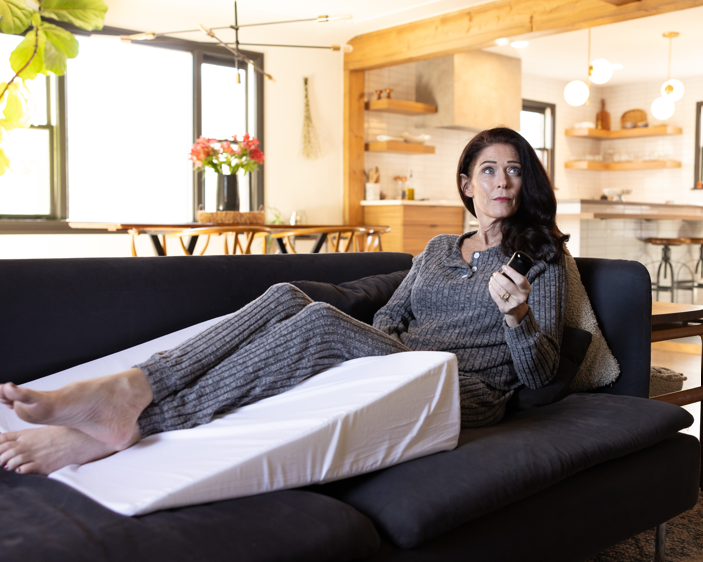Picture this: You've had a long day, you're exhausted, and all you want is to collapse into bed and drift off peacefully. Instead, you spend the next hour tossing and turning, trying to find that one magical position where your upper back doesn't feel like it's hosting a personal torture session. Sound familiar?
If you're dealing with rhomboid pain, your sleeping position isn't just about comfort—it's about survival. Those stubborn muscles between your shoulder blades seem to have a vendetta against rest, turning what should be your sanctuary into a nightly battlefield. But here's the good news: the right rhomboid pain sleeping position can transform your nights from agony to blissful relief.
You're not doomed to a lifetime of restless nights and morning stiffness. With the right knowledge about how your sleep setup affects those finicky rhomboid muscles, you can finally reclaim your rest and wake up feeling human again.
What Exactly Are Your Rhomboids (And Why Do They Hate You So Much)?
Before we dive into sleeping positions, let's get acquainted with the troublemakers. Your rhomboid muscles are two diamond-shaped muscles nestled between your shoulder blades and spine. Think of them as your posture's personal bodyguards—when they're happy, they keep your shoulders pulled back and your upper back aligned. When they're angry? Well, you know the drill.
These muscles work overtime in our modern world. Every time you hunch over a laptop, crane your neck at your phone, or carry a heavy bag, your rhomboids are silently screaming. They become tight, inflamed, and develop trigger points that feel like tiny demons poking you with pitchforks.
The cruel irony? Just when these muscles need rest and recovery the most, we unknowingly torture them further with poor sleeping positions. It's like adding insult to injury, except the injury keeps you awake at 3 AM wondering if this is your life now.

The Sleep-Pain Connection: How Your Bed Became a Battlefield
Your rhomboid pain sleeping position matters more than you might think. During sleep, your muscles should be relaxing and repairing themselves. But if you're sleeping in positions that keep your rhomboids stretched, compressed, or twisted, you're essentially giving them an eight-hour workout instead of rest.
Poor sleeping positions can:
-
Keep rhomboids in a constant state of tension
-
Reduce blood flow to the affected area
-
Prevent proper muscle recovery
-
Create new trigger points
-
Amplify existing inflammation
Think of it this way: if you had a sprained ankle, you wouldn't spend all night standing on it. Yet many people with rhomboid pain unknowingly sleep in positions that keep these muscles under stress all night long.
The Best Sleeping Positions for Rhomboid Pain Relief
Back Sleeping: The Gold Standard
Sleeping on your back is typically the best rhomboid pain sleeping position, and here's why it works so well. When you're lying flat on your back, your spine maintains its natural curves, your shoulders can relax into a neutral position, and your rhomboids aren't being pulled or compressed.
How to perfect your back sleeping setup:
Start with your head and neck properly supported—too many pillows will crane your neck forward, creating tension that travels down to your rhomboids. One medium-firm pillow that maintains your neck's natural curve is usually perfect.
Place a pillow under your knees to take pressure off your lower back and help maintain proper spinal alignment. This seemingly small adjustment can make a huge difference in how your entire back feels in the morning.
Keep your arms at your sides or slightly away from your body. Avoid sleeping with your hands behind your head or arms raised, as this can create tension in your shoulders and upper back.
The back sleeping hack: If you're not naturally a back sleeper, try the "sleep restriction" method. Make it slightly uncomfortable to sleep in other positions by placing pillows on either side of your body to prevent rolling over.
Side Sleeping: The Modified Approach
If back sleeping isn't your thing, side sleeping can work for rhomboid pain, but it requires some strategic modifications. The key is maintaining proper alignment and preventing your shoulders from rolling forward.
Setting up for side sleeping success:
Choose your better side—if one rhomboid is more painful than the other, sleep on the less painful side to avoid compressing the inflamed area.
Use a pillow between your knees to keep your spine aligned and prevent your top leg from pulling your pelvis out of alignment, which can create a chain reaction of tension up to your rhomboids.
Your pillow height is crucial here. You need enough support to keep your neck aligned with your spine, but not so much that your head is pushed up at an angle. The goal is to draw an imaginary straight line from your ear through your shoulder to your hip.
The shoulder position secret: Here's where many side sleepers go wrong—they let their bottom shoulder roll forward under their body weight. Instead, consciously pull your shoulder blade down and back before settling in. It might feel awkward at first, but it prevents that forward shoulder posture that aggravates rhomboids.

Sleeping Positions That Make Rhomboid Pain Worse
Stomach Sleeping: The Ultimate No-No
Sleeping on your stomach is like voluntarily signing up for upper back torture. This position forces you to turn your head to one side for hours, creating a twisted spine and uneven muscle tension. Your rhomboids spend the entire night fighting to maintain some semblance of balance while your neck pulls everything out of alignment.
If you're a dedicated stomach sleeper, breaking this habit is crucial for rhomboid pain relief. It might take some time to adjust, but your upper back will thank you.
The "Dead Starfish" Back Position
While back sleeping is generally the optimal sleeping position for rhomboid pain, there's a wrong way to do it. Sleeping flat on your back with no support under your knees and multiple pillows propping up your head creates an unnatural curve in your spine. This position can actually increase tension in your rhomboids and make pain worse.

Pillow Strategy: Your Secret Weapon Against Rhomboid Pain
The right pillow setup can make or break your rhomboid pain sleeping position strategy. It's not just about head support—strategic pillow placement can maintain proper alignment and provide targeted relief.
Back Sleeping: The Ultimate Position for Rhomboid Pain Relief
When it comes to finding the best rhomboid pain sleeping position, back sleeping reigns supreme. This position naturally maintains your spine's alignment, evenly distributes your body weight, and prevents the muscle tension and compression that can aggravate rhomboid pain throughout the night.
Back sleeping offers several key advantages for rhomboid pain sufferers. Your shoulders remain in a neutral position, preventing the forward rounding that strains these crucial upper back muscles. Your spine maintains its natural curves without the twisting or side-bending that occurs in other positions. Most importantly, back sleeping eliminates pressure points that can trigger pain flare-ups and disrupt your sleep.
The Sleep Again Pillow System: Your Complete Solution
While back sleeping is ideal for rhomboid pain, achieving the perfect position requires proper support—and that's where the Sleep Again Pillow System transforms your sleep experience. This comprehensive system is specifically designed to optimize back sleeping for maximum pain relief and comfort.
Every Sleep Again Pillow System includes:
-
Two Contoured Side Pillows to cradle back and hips
-
Upper Body Wedge to create optimal upper body incline
-
Leg Support Wedge to gently elevate legs
-
Head Pillow to provide head support and neck mobility
-
Removable, washable slipcovers for every piece
This integrated approach addresses every aspect of proper back sleeping alignment. The Upper Body Wedge provides gentle elevation that reduces pressure on your rhomboids, while the Leg Support Wedge maintains proper lower body positioning. The Contoured Side Pillows ensure your torso stays perfectly aligned, and the specialized Head Pillow supports your neck's natural curve without forcing your head forward.
Unlike piecemeal pillow solutions, the Sleep Again Pillow System works as a coordinated unit to create the ideal rhomboid pain sleeping position, helping you wake up refreshed and pain-free.
SHOP THE BEST PILLOW FOR RHOMBOID PAIN
Beyond Sleep Position: Complementary Strategies for Rhomboid Pain Relief
While perfecting your rhomboid pain sleeping position is crucial, combining it with other strategies can accelerate your recovery and prevent future flare-ups.
Pre-sleep stretching routine: Gentle stretches before bed can help release tension in your rhomboids and prepare them for a restful night. Try doorway chest stretches, gentle neck rolls, and shoulder blade squeezes to counteract the forward posture most of us maintain during the day.
Heat therapy before bed: A warm shower, heating pad, or warm compress applied to the rhomboid area 15-20 minutes before sleep can increase blood flow and help muscles relax. Just make sure heating pads have auto-shutoff features for safety.
The tennis ball technique: Place a tennis ball between your upper back and the wall, then gently move around to massage trigger points in your rhomboids. This can provide immediate relief and help you settle into your chosen sleeping position more comfortably.
Morning movement routine: How you start your day is almost as important as how you sleep. Gentle movement and stretching upon waking helps your rhomboids transition from sleep to activity without shocking them into spasm.
Building Your Long-Term Rhomboid Health Strategy
Addressing rhomboid pain isn't just about finding the right sleeping position—it's about creating sustainable habits that support long-term muscle health.
Daily posture awareness: Since most rhomboid problems stem from poor daytime posture, becoming conscious of your positioning during work and daily activities is crucial. Set reminders to check your posture throughout the day.
Ergonomic workspace setup: If you work at a desk, ensure your monitor is at eye level, your keyboard allows your shoulders to relax, and you take regular breaks to move and stretch.
Stress management: Stress causes muscle tension, and the rhomboids are particularly susceptible to stress-related tightness. Incorporating stress-reduction techniques into your daily routine can prevent pain flare-ups.
Regular exercise routine: Strengthening the muscles that support proper posture, including your rhomboids, middle trapezius, and deep neck flexors, can prevent future problems and speed recovery from current pain.
When to Seek Professional Help
While optimizing your rhomboid pain sleeping position can provide significant relief, some situations warrant professional intervention. Consider consulting a healthcare provider if your pain persists despite sleep position changes, interferes significantly with your daily activities, or is accompanied by other concerning symptoms.
Physical therapists can provide targeted exercises and manual therapy techniques that complement your sleep positioning strategies. Massage therapists trained in trigger point therapy can help release stubborn knots in your rhomboids that might be preventing full recovery.
Creating Your Personal Sleep Success Plan
Now that you understand the principles behind effective rhomboid pain sleeping positions, it's time to create your personalized approach. Start by honestly assessing your current sleep habits and identifying the biggest problems.
Week 1: Focus on sleep position basics. Choose either back or side sleeping and perfect your pillow setup. Don't worry about being perfect—focus on consistency.
Week 2: Add complementary strategies like pre-sleep stretching or heat therapy. Pay attention to how different approaches affect your morning pain levels.
Week 3: Fine-tune your approach based on what you've learned about your body's responses. This might mean adjusting pillow height, trying different stretches, or modifying your pre-sleep routine.
Week 4 and beyond: Maintain your successful strategies while remaining open to minor adjustments as your pain improves and your sleep patterns stabilize.
Remember, finding the perfect rhomboid pain sleeping position is often a process of experimentation and refinement. What works for someone else might not work for you, and that's completely normal. The key is to understand the principles and adapt them to your unique situation.
Your rhomboids have been through enough—they deserve a good night's rest, and so do you. With patience, consistency, and the right approach to sleep positioning, you can transform your nights from painful endurance tests into restorative, healing experiences that set you up for better days ahead.
Frequently Asked Questions
Q: How long does it take to see improvement in rhomboid pain with better sleeping positions?
A: Most people notice some improvement within a few nights of consistently using proper sleep positioning, but significant changes typically occur over 1-2 weeks. Remember that your rhomboids may have been irritated for a while, so healing takes time.
Q: Can I use a heating pad while sleeping to help with rhomboid pain?
A: It's not recommended to sleep with heating pads due to burn risk. Instead, use heat therapy for 15-20 minutes before bed, then rely on proper positioning for overnight relief. If you need warmth during sleep, consider heated blankets with automatic shut-off features.
Q: Should I sleep without a pillow if I have rhomboid pain?
A: Generally, no. Proper pillow support is crucial for maintaining neck and spine alignment. However, if your pillows are causing your head to be pushed too far forward, you might need a different type of pillow rather than no pillow at all.
Q: Is it normal for my rhomboid pain to be worse in the morning?
A: Some morning stiffness is normal, but pain that's significantly worse upon waking often indicates poor sleep positioning or inadequate support. This should improve as you optimize your sleep setup.
Q: Can my mattress cause rhomboid pain?
A: Yes, a mattress that's too soft or too firm can contribute to poor spinal alignment and muscle tension. Your mattress should support your body's natural curves while providing pressure relief.
Q: Can stress affect my rhomboid pain at night?
A: Absolutely. Stress causes muscle tension, and many people carry stress in their shoulders and upper back. Incorporating stress-reduction techniques like deep breathing or gentle stretching before bed can help your rhomboids relax.
Q: How do I know if my pillow is making my rhomboid pain worse?
A: Signs include waking up with increased pain, neck stiffness, or headaches. Your pillow should support your neck's natural curve without pushing your head too far forward or letting it sink too low.
Medical Disclaimer
The information provided in this article is for educational and informational purposes only and is not intended as medical advice. The content should not be used as a substitute for professional medical advice, diagnosis, or treatment. Always consult with your physician or other qualified healthcare provider before starting any new treatment or making changes to your existing healthcare routine.


